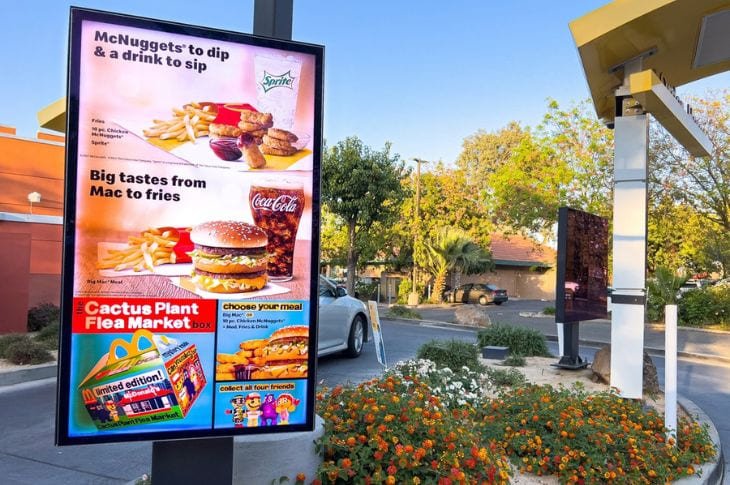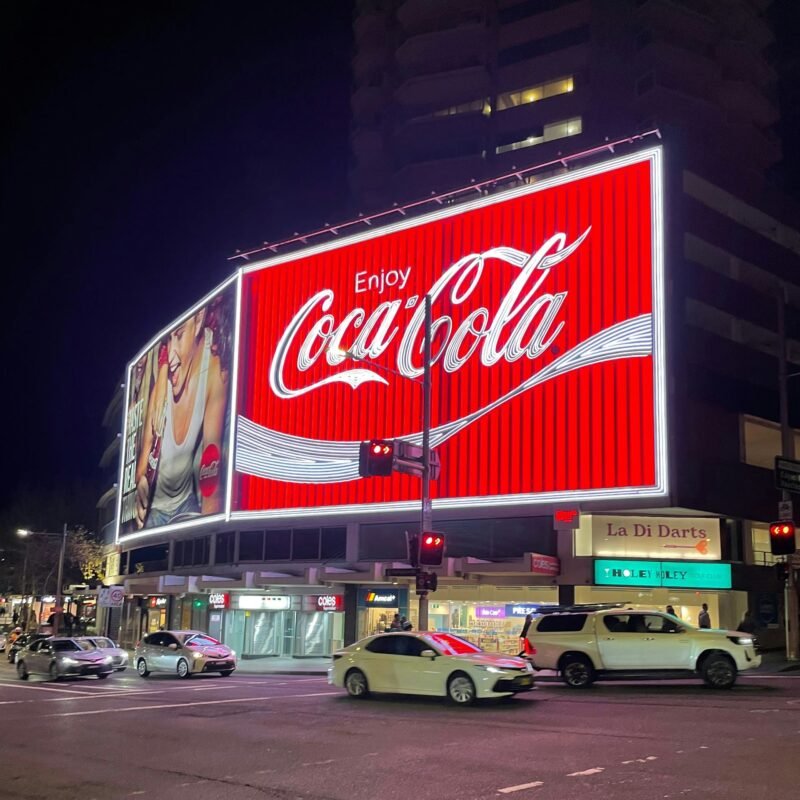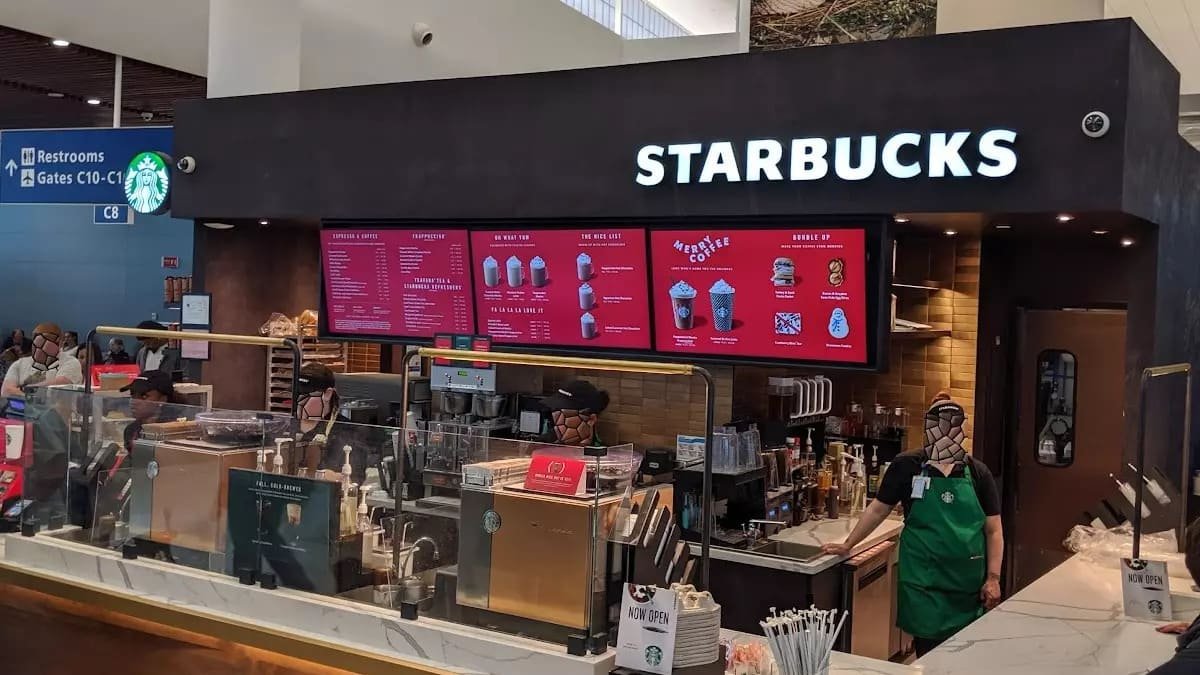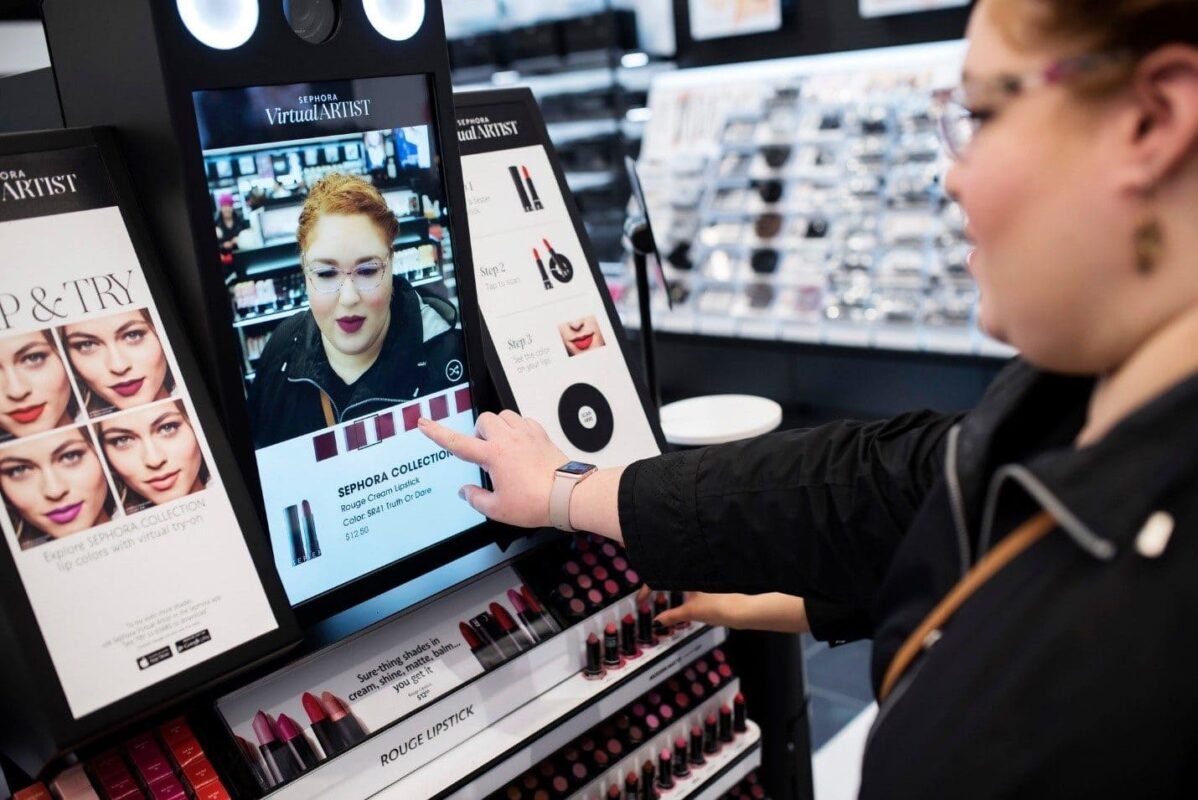Digital signage is changing how businesses capture customer attention. Poorly designed screens easily fade into the background, while effective signage graphic design stands out and drives real engagement. According to ComQi, clean layouts and readable fonts help messages cut through distractions.
In this guide, you’ll learn what signage is and discover practical signage tips design that help you maximize display impact and create memorable customer experiences.
Key Takeaways:
- Signage graphic design works best when clarity, readability, and aesthetics align.
- Digital signage should adapt to screen size, location, and audience behavior.
- Following proven design principles improves visibility, engagement, and brand recall.
What Is Digital Signage?
Digital signage uses electronic displays to share visual content, ranging from ads and menus to navigation. You’ll commonly see it in airports, retail stores, hotels, and corporate offices.
When asking what is signage design, it’s about combining typography, imagery, and motion to create clear, impactful messages. Strong design bridges technology and communication, transforming simple data into memorable visuals.
10 Digital Signage Design Tips
Here are ten practical approaches to help you design signage that speaks clearly and effectively.
1. Keep Your Message Short and Clear

McDonald’s digital menu board | Source: Rise Vision
Shoppers move fast, so signage should deliver the message at a glance. Use concise headlines and keep text under three lines. Short, bold words capture attention faster than long explanations.
For example, McDonald’s digital menu boards highlight core items, such as “Fries” or “Big Mac,” with large fonts, ensuring customers can make decisions quickly.
2. Choose Readable Typography
The choice of typography determines whether people actually understand your message. Fonts with simple shapes, such as Helvetica, read better at scale than decorative ones. Using light text on dark backgrounds, or vice versa, improves legibility.
Apple Stores exemplify this principle well: their digital signage utilizes clean, minimal fonts that align with the brand’s identity, making messages both elegant and easy to read.
3. Prioritize Contrast and Color Harmony

Coca-Cola digital signage | Source: Unsplash
Effective design uses high contrast between background and text for better visibility. Colors should complement the brand but never overwhelm the message.
Take Coca-Cola’s digital billboards in Times Square. The combination of red backgrounds with white lettering delivers unmistakable visibility while staying true to brand identity.
4. Adapt Content to Screen Size
Effective signage graphic design should adapt content to every screen size, so visuals stay impactful no matter the setting. Clarity on a desktop doesn’t always translate to big screens. To keep messages sharp, pay attention to fine-tune resolution, font size, and spacing for each display.
In airports, flight information boards use large typefaces with clear spacing, ensuring travelers can read from across the hall, regardless of screen size.
Also Read : How to Make Business Cards in 10 Easy Steps for Everyone
5. Balance Motion and Static Elements
Movement draws attention but can overwhelm if overused. Simple fades or brief loops keep digital signage dynamic while avoiding distraction.
Nike’s flagship store in New York uses dynamic visuals that highlight shoes in motion, but the background remains static, keeping the focus on the product.
6. Place Content Strategically

Restaurant digital menu board | Source: Invidis
Smart signage graphic design considers not only the visuals but also where content appears, maximizing visibility and engagement. Place screens along customer paths, like eye-level shelves in stores or counters in quick-service restaurants.
For example, Starbucks places digital menu boards behind the cashier so customers can easily view seasonal drinks and food options while ordering. This strategic placement keeps information up to date and makes the overall experience more engaging.
7. Maintain Brand Consistency
Consistency builds trust and strengthens recognition. Every display should reinforce the same fonts, colors, and tone across all locations.
For instance, Samsung showrooms around the world maintain uniform signage layouts, so the brand identity feels cohesive and professional.
Also Read : 10 Logo Design Tips for Beginners to Create Memorable Logos
8. Incorporate Dynamic and Real-Time Update

Sephora’s try before you buy | Source: Harvard.edu
Real-time updates, such as new products, promotions, or news, keep digital signage relevant and engaging. Fresh content encourages audiences to return, knowing they’ll always see something new.
Sephora, for instance, uses advanced digital displays that let customers virtually try different makeup products before purchasing. This interactive approach is a powerful digital signage strategy, blending technology and marketing to create an engaging shopping experience.
9. Test in Real Environments
A design may shine on screen but fall short in real environments. Always check your signage in its real setting to confirm visibility and impact.
For example, digital signage in Las Vegas casinos is tested under flashing lights and heavy foot traffic to ensure content remains visible and effective.
Also Read : 10 Essential Web Design Tips for a Small Business
10. Keep Updating Content

H&M’s smart mirror | Source: Retail Dive
Digital signage is only effective if the content feels current and relevant. Outdated visuals quickly lose audience trust. Brands should commit to a schedule for refreshing graphics, text, and promotional messages.
For example, H&M’s smart mirror introduces customers to seasonal collections and limited-time sales. To maintain impact, this feature must be updated consistently, ensuring the shopping experience stays exciting and encouraging customers to return.
Also Read : How to Build an Interactive Website in 10 Steps
Elevating Your Digital Signage Strategy
Great digital signage is not just about attractive visuals but about communication that works. With thoughtful signage graphic design, businesses can turn ordinary screens into platforms that inform, inspire, and guide audiences effectively. The tips above show how even small design choices can create a meaningful impact.
Strong typography elevates signage by making messages clear and reinforcing brand personality. For designers seeking refined options, Letterara Studio offers curated luxury font collections that combine elegance with functionality.

